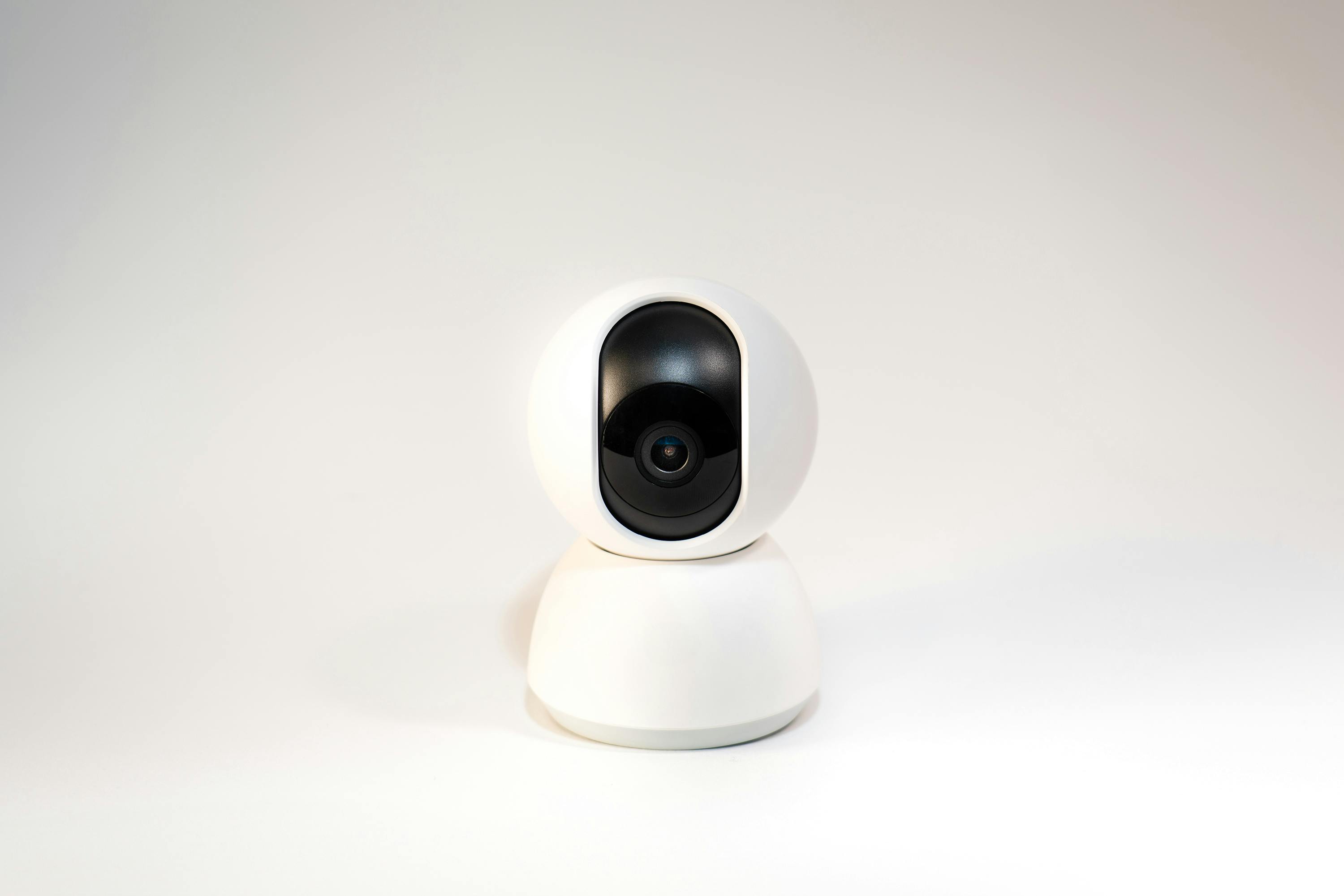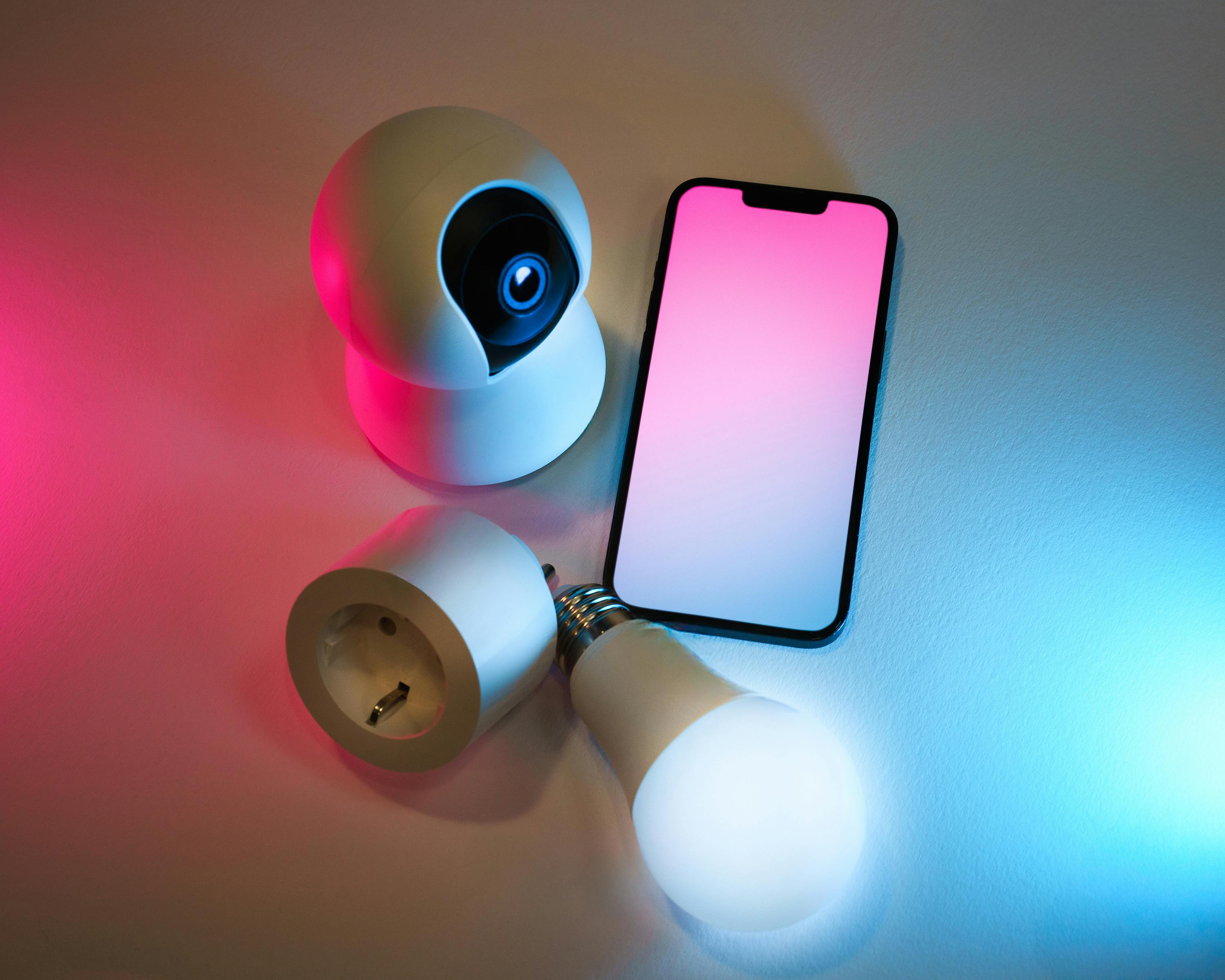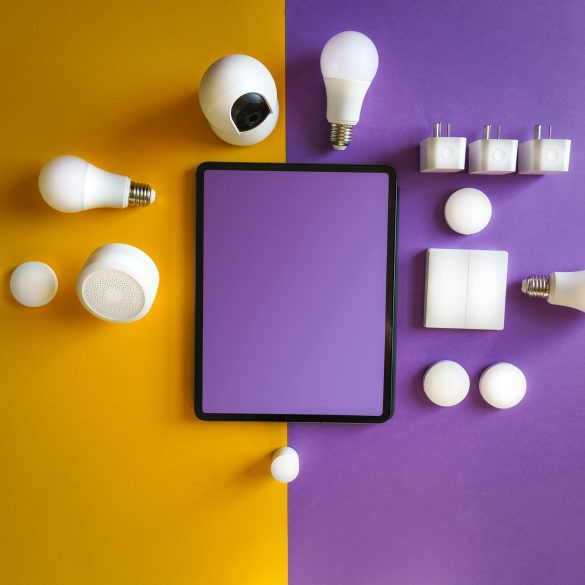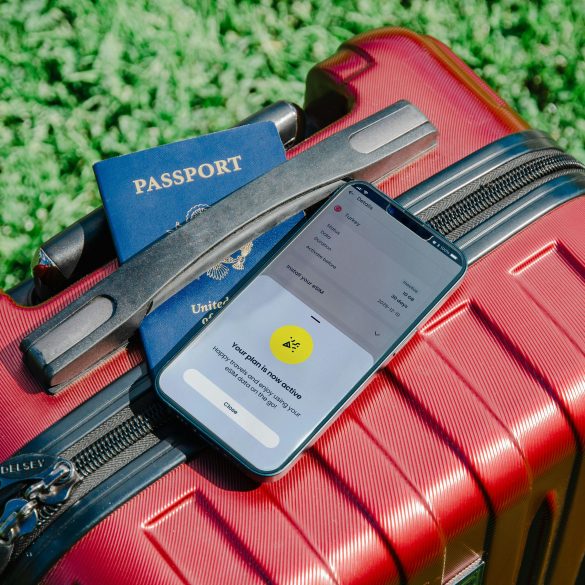Smart Home Security in Argentina: Essential Tips for Beginners
Back when I first dipped my toes into smart home tech—think Wi-Fi lights, voice assistants, and the irresistible allure of unlocking your front door from your phone—nobody warned me about just how exposed I might be. As someone who’s lived and worked with digital security in Buenos Aires and across Argentina, I’ve seen first-hand how these shiny new devices can silently open doors for more than just family and friends. In a country where cybercrime rates are climbing and even the most careful people can fall for a phishing link, smart home security really isn’t optional1. That might sound dramatic, but once you realize how much personal data flows through your home’s connected gadgets, you’ll see why a beginner’s guide for Argentina is, frankly, past due.
Let me set the scene: You grab a new smart speaker at your local electronics store—maybe it was a hot deal at Frávega—and a quick tap on your phone has Alexa or Google Assistant bringing music to your kitchen. Meanwhile, your teenager’s installing a plug that lets him turn on the TV from his room, and your partner’s connected the aircon to their smartphone. Sound familiar? It’s happening everywhere these days, from high-rise Palermo apartments to family homes in Rosario. What no one talks about—at least, not at Sunday asados—is that each added device is a potential target for hackers, scammers, or even nosy neighbors extending their Wi-Fi reach. Here’s where things get real: Smart homes are only as secure as the average tech user living in them, and most of us, honestly, are nowhere near cybersecurity pros.
Let’s pause and make this crystal clear—just adding a password isn’t enough in Argentina (nor anywhere else). Argentine ISPs sometimes rush smart devices into the market without much public guidance on privacy, and local regulations lag behind the technology. On top of this, kids, roommates, and even short-term guests often get device access that outlasts their welcome. I’ve messed this up myself before—left the guest Wi-Fi running too long, or forgot to disable a visitor’s device access—and the fix was more painful than I care to remember.
Why Smart Home Security Matters in Argentina
Argentine homes, more than ever, are filling up with smart cameras, thermostats, robot vacuums, and remote alarms. In fact, recent surveys put Argentina as the third fastest-growing Latin American market for smart home tech—ahead of Chile and right behind Brazil2. This rapid adoption is both exciting and risky. Here’s why:
- Rising cyberattack rates on domestic users since 20213
- Frequent privacy breaches due to weak Wi-Fi settings
- Growing black market for compromised smart devices in Buenos Aires and Córdoba4
- Poor consumer awareness of local data privacy laws
Argentina’s Personal Data Protection Act (Law 25.326) gives you specific rights over how companies (and apps) use your household’s data. But most smart device vendors in Argentina still lack clear Spanish-language privacy policies, making enforcement tricky for everyday users.
Honestly, what really strikes me is how few people realize how much personal—and even financial—information flows through their “dumbest” smart device. A motion sensor or a basic smart plug might seem harmless, but if it’s hacked, an intruder can track when the house is empty. I’ve had neighbors in Buenos Aires lose cash and valuables when burglars exploited data from a compromised cheap Wi-Fi camera. The feeling of violation lingers long after you’ve changed the locks.
What Are the Main Threats? Common Smart Home Risks
Let’s get practical. What are you actually up against as a beginner with smart home gadgets in Argentina? The most common security risks include:
- Weak passwords or default credentials—the simple hack no hacker can resist.
- Outdated device firmware—think of these as “old doors” nobody bothered to reinforce.
- Poor Wi-Fi security—open or WEP-protected networks are an open invitation.
- Over-permissioned apps—granting more access than needed, sometimes because the app’s English instructions are hard to follow for Spanish speakers.
- Unauthorized access from visitors—guests who keep their device access after leaving.
Are these risks theoretical? Not at all. According to a 2023 Kaspersky study, over 31% of Latin American smart home users experienced at least one attempted digital intrusion in the previous year5. That doesn’t just include high-tech hackers; sometimes it’s a tech-savvy neighbor, a curious teenager, or even a family member who forgot to lock things down before heading off for vacaciones.
Your entire household’s digital safety can be compromised through a single weak link—sometimes literally a basic smart bulb with an easy-to-guess password!
Let’s not sugarcoat it: these threats are only increasing, especially as more Argentinians connect everything from laundry machines to mate makers to the internet. In the next section, I’ll break down exactly what you can do to create strong, practical defenses—no IT degree required.
Layered Defense: Steps Any Beginner Can Take
Having seen how quickly things can go south, here’s what I wish someone had told me early on: Digital security isn’t about buying the fanciest equipment—it’s about using whatever devices you have wisely, with a layered approach. That’s not just tech jargon; it means if one defense fails, another picks up the slack. Most Argentine homes—like mine—run a hodgepodge of imported gadgets, discount-store finds, and older routers, so tailor these pointers to what’s actually in your living room right now.
1. Start with Wi-Fi: The Foundation of Everything
If I could only give one piece of advice, it’d be this: Secure your Wi-Fi as if your identity depended on it (because these days, it probably does). Even a basic consumer router in Argentina has settings you can tweak. It might feel intimidating at first—I can’t count the times I’ve gotten lost in a Telmex or Personal router menu—but stick with it. Here’s what generally works:
- Change the network’s default name (SSID) and password immediately
- Use WPA2 or WPA3 encryption (never WEP)
- Disable WPS (Wi-Fi Protected Setup) on older routers
- Set up a separate “guest” network if you entertain often
I once left a guest network running at a December holiday party—then forgot to disable it. Months later, a neighbor was piggybacking on it to download giant files, slowing down our entire network and opening the door for more serious risks.
2. Passwords: Unleash Your Inner Paranoid
I’ll be honest: I used to roll my eyes at all those wild password recommendations (“at least 12 characters! symbols! no family names!”) until a friend’s security camera was hijacked while she was on holiday in Mar del Plata. The default admin login “admin/admin” hadn’t been changed. Everything else she did right was undermined in one fell swoop.
- Avoid using default usernames or passwords—always change them during setup
- Store passwords using apps like Bitwarden or LastPass (many offer Spanish UI)
- Don’t reuse passwords between devices, even within your own home
- If available, enable two-factor authentication (2FA) for accessing device dashboards
Sound excessive for a “lightbulb”? Maybe, but weak passwords are still responsible for most smart home breaches across Latin America6.
3. Regularly Update Devices (Yes, Even the Dumb Little Ones)
Most people ignore those annoying “update available” notifications, partly because firmware updates on imported gadgets (Xiaomi, TP-Link, etc.) are rarely explained in Spanish. But these often patch vulnerabilities criminals already know about. Even I’ve put this off and regretted it.
- Check for updates for each device every couple of months
- Enable automatic updates if the device supports it, or check vendor sites manually
- Avoid buying “no-name” gadgets that never get updates or offer shady apps
4. Limit Each Device’s Permissions
Too many smart home apps in Argentina request “all access”—contacts, microphones, cameras—when they really shouldn’t. Ever wonder why your basic lamp switch needs to access your phone’s location? Me too. Stop and check every permission, especially on devices with foreign apps.
- Install only official apps from Google Play or App Store—not random APKs from the web
- Give each device the LEAST amount of access it needs to function
- Review connected devices in your router’s admin page every few months; remove unknown devices
5. Discuss Security With Household Members
Here’s where I see most Argentine families go wrong: Only one person (the “techy”) understands the devices, while everyone else uses them carelessly. I’ve learned to make security a family conversation, not just a solo responsibility. In my own home, setting ground rules—like not sharing device access codes—has saved us some headaches.
Create a list of all smart devices in your home and who has access. You’d be shocked how many forgotten or “ghost” gadgets (old phones, guest plugs) pop up.
True Stories: Security Mistakes and Fixes in Argentine Homes
Let me walk you through two actual stories I’ve seen up close—because, frankly, most people only care once the “bad thing” has already happened. (Been there.)
| Scenario | Risiko | What Went Wrong | The Fix |
|---|---|---|---|
| Imported Smart Plug Re-used by Ex-Roommate | Remote device access long after moving out | Device never removed from Wi-Fi access—remote controls not reset | Factory reset the plug, changed Wi-Fi creds, set guest access controls |
| Baby Camera Showing on Neighbor’s App | Potential child privacy violation | Camera left with default credentials; app allowed “open sharing” by mistake | Changed strong password, updated app, disabled sharing, reviewed all permissions |
Point is—almost all these problems could have been prevented with a few easy steps learned vor something went wrong.

Tools & Tips: Making Security Simple Every Day
I’ll be completely honest: most so-called “easy fixes” for cybersecurity aren’t really easy at all—at least, not for someone just starting out in Argentina. But there are a few streamlined habits and tools that make all the difference—and yes, even my abuela could learn most of these, so you’ve got this.
- Keep Apps Updated. Your smartphone apps control most smart home devices—protect your house just by updating your phone’s apps weekly.
- Use App PINs or Biometrics. Don’t just protect your phone—add a biometric lock (fingerprint/Face ID) to the smart home apps themselves.
- Log Out Devices No Longer Used. Factory reset gadgets before selling or gifting; log out from your accounts and Wi-Fi when recycling old gear.
- Set Device Alerts. If your device or app offers suspicious activity alerts, turn them on and review activity logs every so often.
- Use Physical “Kill Switches.” Plug sensitive devices (cameras, microphones) into smart plugs you can physically turn off when not in use.
I keep a sticker sheet handy—every new device gets a label with purchase date and password hint (never the actual password!). It’s saved me from more “what the heck is this device?” moments than I can count.
On the tool front, here’s a mobile-friendly table I made for quick reference:
| Werkzeug | What It Does | Argentina-Ready? | Free Option? |
|---|---|---|---|
| Bitwarden Password Manager | Creates and stores complex passwords | Yes—Spanish UI available | Ja |
| Fing App | Shows all devices on home network | Ja | Ja |
| Router Firmware Updates | Patches network security bugs | Varies by ISP/router | Yes, generally |
| ESET Home Security | Local security suite—focus on Latin American threats | Yes—Argentine support | Trial |
Quick Questions: How Secure Is “Good Enough”?
Let that question bounce around for a moment. In my experience, nothing is bulletproof, but if you follow even half these steps, you’re already Weg ahead of the average Argentinian smart home owner8. A few self-check prompts:
- Do you regularly change (and record) all device passwords?
- When was the last time you checked your router’s list of connected devices?
- Is every device in your home something you know is secure?
- Are your housemates or family aware of the risks?
I can say from experience: The moment you spot an unfamiliar gadget on your Wi-Fi, you feel a jolt of paranoia—and yes, sometimes, you’ll realize it’s just the smart fridge you forgot about, but better safe than sorry.
Going Further: Resources, Laws & Community Support
Now, maybe you want to get a bit fancier—or, like me, you want to stay proactive rather than reactive. Argentina’s unique regulatory environment, growing online community, and local security experts offer resources that can keep even beginners focused, engaged, and up to date.
Argentine Laws & Policy: A Beginner’s Map
The Personal Data Protection Act (Ley 25.326) sounds technical, but in practical terms, it means you have the right to know where your data goes and challenge its misuse. Enforcement, however, is another matter—especially with international device imports. My advice: Always prefer devices with Spanish-language privacy disclosures and ideally, a local support channel.
- Check if the device/app has a Spanish privacy policy
- Email support using your rights under habeas data (requesting data held about you)
- If wronged, escalate to Argentina’s Agencia de Acceso a la Información Pública—while their process is slow, it’s an actual legal avenue
Unlike some neighboring countries, Argentina’s constitution (Article 43) already guarantees data privacy for all digital citizens—a foundation for building tougher smart home security laws in the future.
Online Communities & Local Support
If I’m stuck—which still happens!—I turn to online Argentine tech forums, Reddit’s r/argentina, or the many Facebook groups focused on “Domótica Argentina” (local smart home discussions). Crowdsourcing advice from people who’ve actually used these devices in Argentine ISPs and neighborhoods uncovers solutions you wouldn’t find from the manufacturer’s site.
- Join a local WhatsApp or Telegram group for device-specific tips
- Attend tech meetups (many are hybrid in Buenos Aires and Córdoba now!)
- Don’t hesitate to ask silly-sounding questions—usually, they’re the most important ones
Final Check: Your Personalized Smart Home Security Plan
Let’s bring this full circle. Having spent years watching (and making) mistakes with digital security—and seeing how those tiny habits play out across real households in Argentina—I can tell you there’s no such thing as a “perfect” defense. But with a little intentionality, anyone can dramatically lower their risk without breaking the bank or turning their home into a digital fortress.
Here’s my current process, the one that’s stuck even after plenty of trial and error. Feel free to steal it, tweak it back-and-forth, or toss out what doesn’t fit your reality. No plan is too basic if it Genau genommen gets used:
- Keep a running inventory of every smart device in the home—label, update, review quarterly
- Automate updates wherever possible, checking once a month for stragglers
- Turn off (or unplug) devices you don’t need—especially cameras and microphones at night
- Make security a household ritual—talk about new devices before anyone plugs them in
- Schedule a 15-minute monthly security check as a family (or with roommates)
Smart Home Security: What’s Next for Argentina?
Argentine households are only going to get more connected, more often, and more creatively. New devices pop up in big box shops and online sales every quarter. Looking ahead (and based on what my colleagues in local cybersecurity are predicting), we’ll probably see:
- Tighter integration of privacy controls into Argentine consumer law
- Greater outreach from ISPs on router security and device management
- More Spanish-language guidance right in device packaging and setup screens
- Growing homegrown tech forums and community support for “domótica”
Final Thoughts: Your Home, Your Rules
The whole point of a smart home is better comfort, connection, and sometimes even fun. Security shouldn’t feel like a burden. From my perspective, treating it as a shared responsibility—and talking openly about it, even the ways things go wrong—actually brings relief. The more we normalize digital vigilance (especially for beginners), the happier and safer our entire Argentine digital community can become. I’m still learning, still improving, and yes, sometimes still making mistakes—but that’s the only honest way forward.
Don’t wait for the “bad” thing to happen. Start today—even with just one device or password. You (and your future self) will thank you.
Verweise



